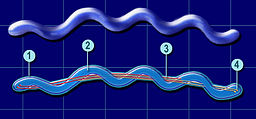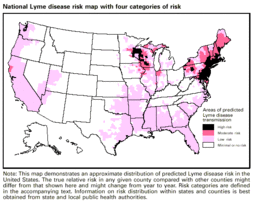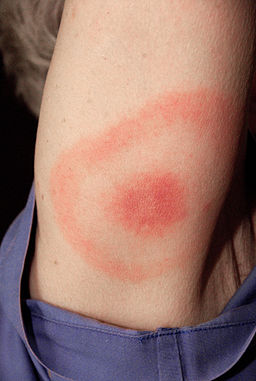Pathogenesis of Lyme Disease and Gene Expression in Borrelia burgdorferi
Borrelia burgdorferi is the main bacterium that is responsible for Lyme disease, a tick-borne infectious disease. Since the late 1800s and early 1900s, cases of undefined infections were reported throughout Europe that would now be categorized as cases of Lyme disease [1]. However, it was not until the 1970s when Lyme disease became of interest to scientists. In Lyme, Connecticut, and its surrounding areas, there were reports of peculiar cases of arthritis during the 1970s. Because the cases were mostly children who played in wooded areas, especially during the summer months, researchers quickly found the correlation between Lyme disease and ticks. It wasn’t until the 1980s when researchers found the bacteria in ticks that were responsible for the infection. The bacterium was later named B. burgdorferi in respect to Willy Burdorfer, one of the researchers credited to its discovery [2]. Now, Lyme disease is the most prevalent tick-borne illnesses present in the Western Hemisphere [3] . Ticks infected with B. burgdorferi transmit the bacteria to the host organism where the bacteria then adapt to the organism’s immune system and environment in order to grow and divide. With B. burgdorferi 's painless and almost unnoticeable transmission until after the spread of the bacteria and the bacteria's adaptive mechanisms, diagnosis of Lyme disease is often delayed. Because of B. burgdorferi ’s effective survival strategies within a host, the lack of a working and available vaccine, and symptoms characteristic of other illnesses, Lyme disease is becoming a widespread public health concern.
Manifestations of Infection in Humans
Epidemiology
United States
There were 19,931 human reported cases of Lyme disease in the United States in 2006 [4] . Reports of Lyme disease are more common in areas that have high populations of ticks. Ixodes, a species of ticks, and in particular Ixodes scapularis (the deer tick), are known to be the predominant couriers of Lyme disease in the United States. Within the United States, these ticks and therefore Lyme disease are generally most found in the Northeastern region, the Northwestern regions, and the Northcentral regions of the United States. Ticks are most active in the warmer seasons of the year [5] . Being outdoors, especially in wet and wooded areas increases risk of contact with ticks, as they prefer damp environments.
Worldwide
Cases of Lyme disease are found worldwide, but tend to be concentrated in certain temperate regions. Lyme disease is found most commonly in the Czech Republic, Germany, Finland, Estonia, Belgium, France, Slovakia, Hungary, Poland, Britain, Norway, and Scotland in Europe, British Columbia and Ontario in Canada, and the United States [6] . B. burgdorferi is characteristic to the United States, and different species of Borrelia , such as B. afzelli , B. garinii, and B. spielmanii, are responsible for Lyme disease in other places of the world [7]
Symptoms
Host Immune System
Characteristics of Borrelia burgdorferi
Morphology

Genome
Adaptive Gene Expression
Physiological Conditions
Environmental Conditions
Further Reading
Borrelia burgdorferi, the Lyme Disease Agent Journal of Clinical Microbiology, American Society for Microbiology
Lyme Disease Spirochete, Borrelia burgdorferi , Endemic in Epicenter at Turkey Point, Ontario Journal of Medical Entomolgy
References
"Lyme disease Natural Medicines. 2015.
Edited by Jenny Han, a student of Suzanne Kern in BIOL168L (Microbiology) in The Keck Science Department of the Claremont Colleges Spring 2015.



